It might have the largest range of features. It might be a lightweight app you can use on your mobile phone. The best graphic design software for you will ultimately depend on your needs:
- Are you a freelancer looking for an affordable option?
- A professional designer or illustrator who needs advanced functionality?
- Or a skilled amateur looking to create something fun and funky for social media?
Whichever sounds most like you, price will almost certainly be one of the factors which governs your choice of software…
These days, a lot of online graphic design software is available in free or freemium versions. Of course, these may lack many of the advanced features of the top graphic design software brands.
Yet they’re also a great entry point for those without formal training or design experience.
On the flip side of the coin, when it comes to the usually desktop-based offline graphic design software aimed at professionals, the price might be higher but the range of features tends to be extensive:
If you know your vector design from your animations and your video editing from your visualisations, you will have certain specific requirements in mind. After all, you need to meet the often very precise demands of the printing and publication process.
But whether you need some professional photo editing software, to prototype a new product or design the layout of your new website, this list contains all of the best graphic design software available today, both offline and online.
See here for the best graphic design courses.
Top Laptops & Computers
- 17 Essential Tools for Designers
- Best laptops for designers
- Best chromebooks for designers
- Best computers for designers
- Best computers for video editing
- Best Macbooks for designers
- Best laptops for video editing
- Best laptops for programming & coding
- Best budget laptops for designers
More Top Gear for Designers
- Best printers for designers
- Best monitors for designers
- Best tablets for designers
- Best Huion tablets for designers
- Best mouse for designers
- Best earphones for music-lovers
- Best cameras for designers
- Best microphones for designers
- Best office chairs for designers
- Best external hard drives for designers
- Best monitor calibrators for designers
- Best pens for creatives
- Best phones for designers & creatives
Adobe Photoshop
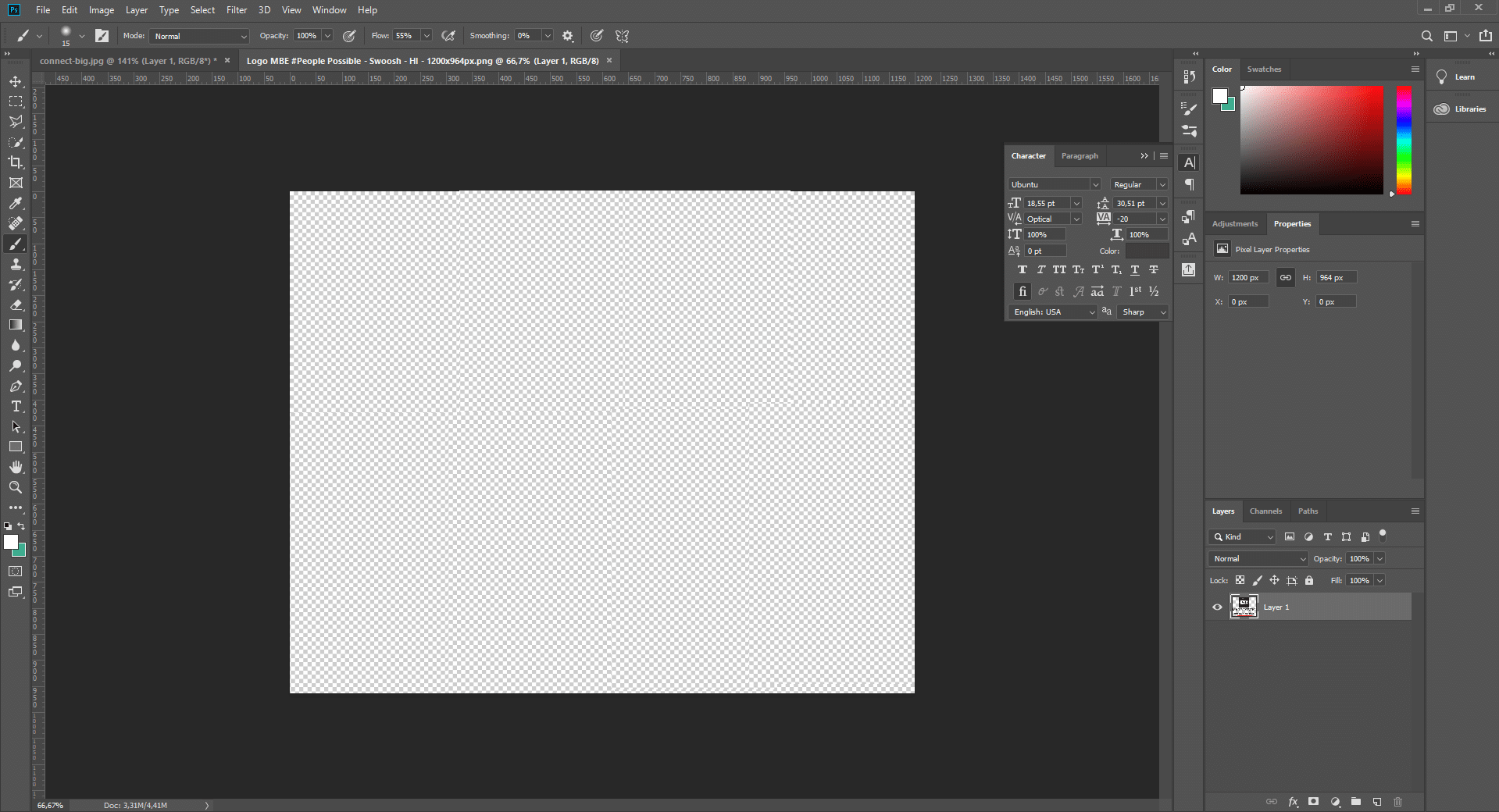
Adobe Photoshop is the flagship of the Adobe graphic design software portfolio. If you are a professional graphic designer, photographer or illustrator, you will almost certainly have given it a try.
See here for all the latest Adobe deals including 65% Off!
Photoshop pretty much dominates the photo editing software field. You can use its huge range of photo manipulation and correction tools to enhance, create filters, manage layers, mask luminance, carry out brush smoothing – anything you could conceivably want to do to adjust an image.
It has few equals in the world of graphic design either. Website and app design, creating 3D images, video editing, animation, posters, banners, magazines and artwork…
Whatever you want to do, Photoshop does it. What’s more, its smooth, professional interface and massive range of tools mean it always does it well.
The only real cons of Adobe Photoshop are the complexity and cost:
Firstly, that smooth interface has a lot of options. There is a solid amount of helpful information, but if you don’t know what you’re doing, it’s easy to get lost or overwhelmed.
Second, you have to pay for a subscription to the Adobe Creative Cloud (CC). You can’t get a perpetual license. On top of that, if you want the software’s premium assets, you have to pay for them.
If those aren’t a problem for you though, Photoshop is probably the piece of Adobe graphic design software you’re looking for.
Adobe Illustrator
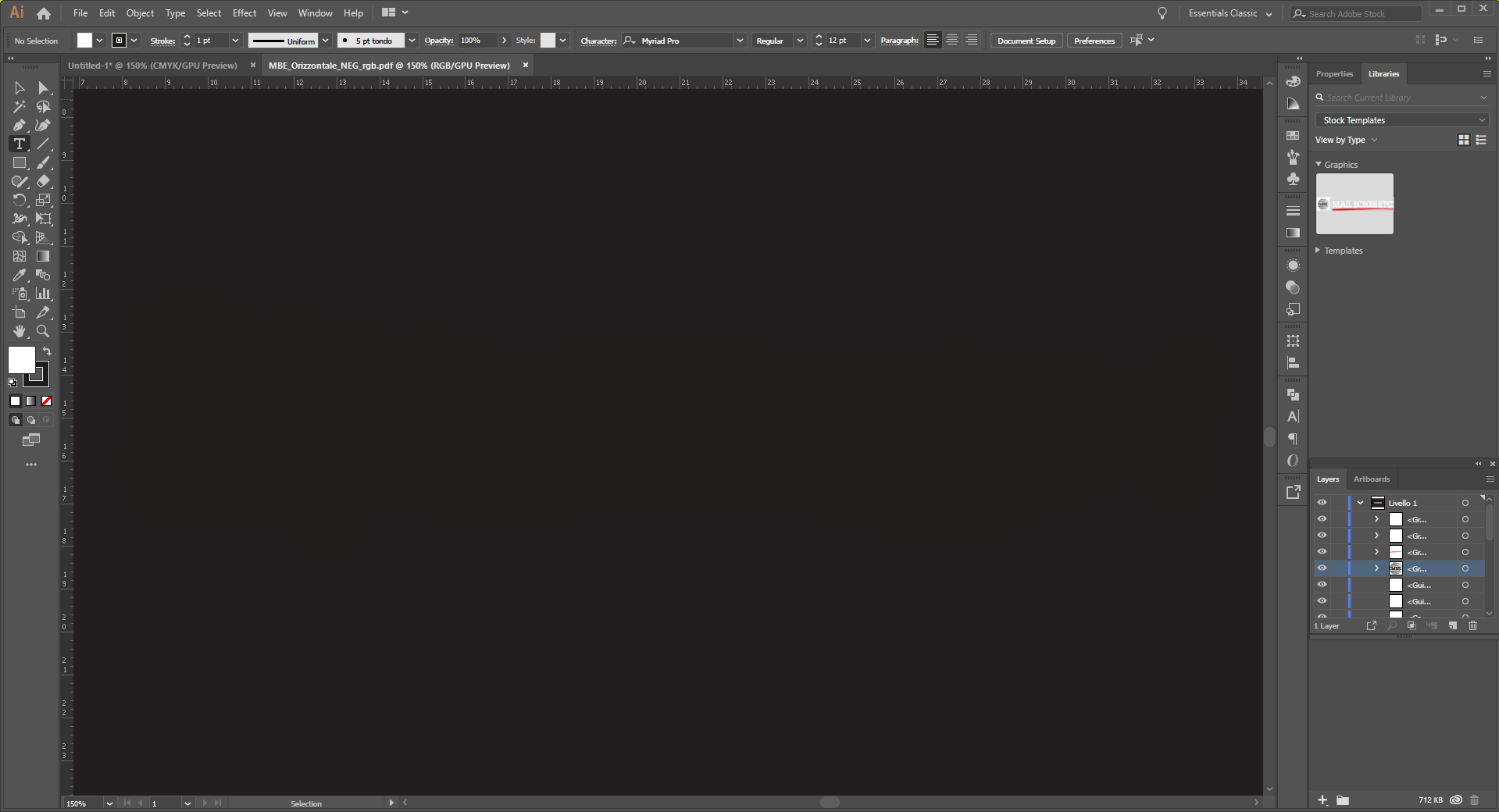
Adobe Illustrator is software designed for almost anyone to use. The clarity of its interface makes it very accessible and it contains a huge number of quick, convenient keyboard shortcuts.
Yet despite this, Illustrator has a dynamic feature-set suitable for even the most experienced graphic design professional.
Plus, it shares many interface features with fellow Adobe product, Photoshop. This makes it easy for people who are used to Photoshop to make the jump. Don’t expect to use exactly the same shortcut keys though!
Where Illustrator really comes out ahead of Photoshop is when it’s used for vector graphic design:
Sketching, designing, illustrating and topography are all relatively straightforward and they can be pretty snappy too if you use the built-in templates, brushes and base designs. You can also alter the scale you’re working at – between billboard and business card size, for example – with ease.
The recent versions have some incredible tools on top. These include Touch Type, Puppet Warp (allowing you to transform parts of illustrations) and a simpler version of the previous Free Transform tool.
Again, Adobe Illustrator suffers from only being available as part of the expensive Adobe Creative Cloud platform – a pricey subscription model. You can’t just buy the Illustrator software outright any more.
See here for all the latest Adobe deals including 65% Off!
Yet despite this one issue, Adobe Illustrator is the go-to vector design program for industry professionals for some very good reasons.
CorelDRAW
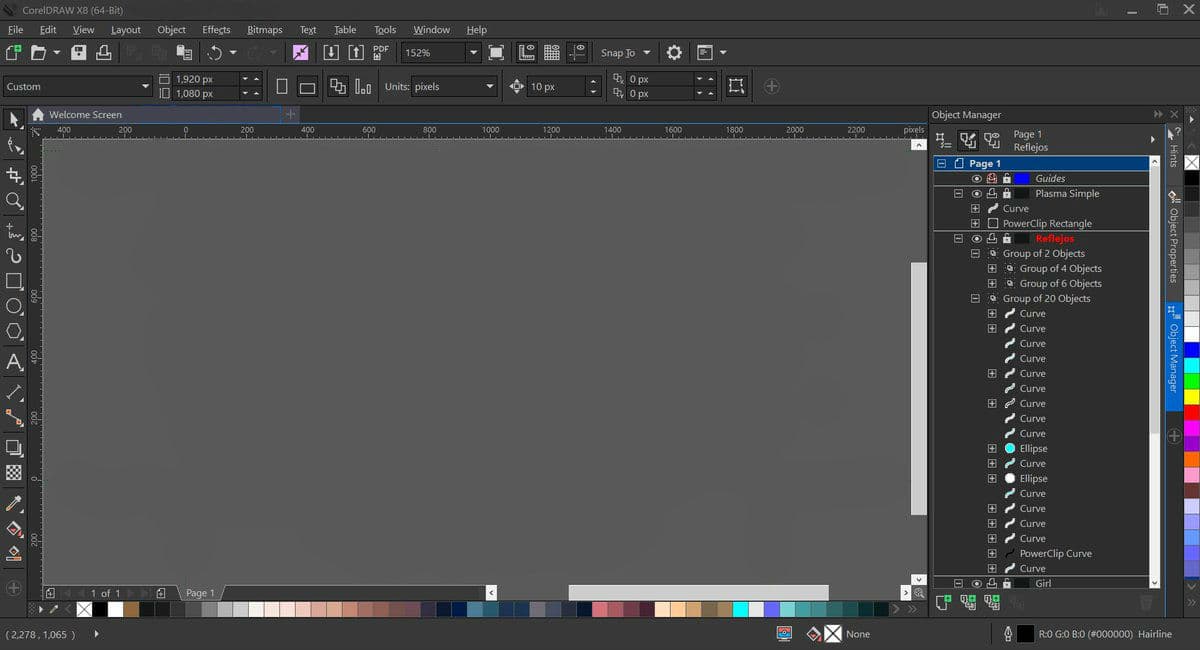
Not just in this list of graphic design software to break up appearances of Adobe’s name, CorelDRAW is a design industry classic – and one which continues to be a powerful and in-demand option today.
Covering both bitmap and vector design, CorelDRAW does what Adobe Photoshop and Illustrator do so well separately in one combined package. It offers a huge number of tools to use, including the new Symmetry drawing mode and 3D extrusion “Block Shadow” effect.
CorelDRAW’s interface is easy to jump right into and you can customise how many parts work to meet your preferences. Admittedly, like most design software, it has to be said that some of the advanced features do take some experience to get good results with.
That aside, the only true cons of CorelDRAW are the fact that it is Windows-only and, again, price:
You can get a perpetually-licensed full version. Unfortunately though, this clocks in at a whopping $739 at time of writing – mainly because you have to purchase the full CorelDRAW Graphics Suite just to access this one part of it.
It is available on a subscription model too, much like the Adobe Creative Cloud and at a slightly cheaper price point.
Despite this expense, the massive feature set makes CorelDRAW the graphic design software of choice for many professional designers – especially creators of print output.
Adobe Indesign
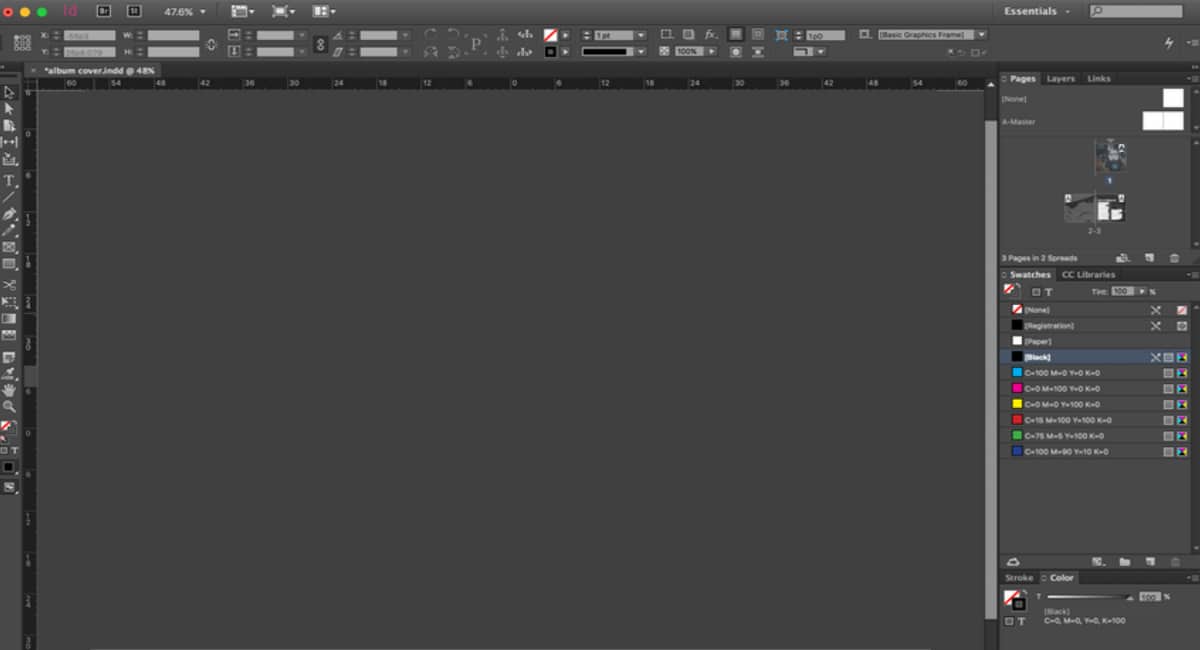
Adobe graphic design products don’t end at Photoshop and Illustrator. Adobe InDesign is used by designers in a vast swathe of industries to design websites and app layouts, online magazines, print books, e-books, posters, flyers, brochures and much more.
The real strength of InDesign is that it lets designers work together with copywriters and developers with such ease:
Each team can share and combine their copy or graphics into a single design. This improved workflow is supplemented by Adobe’s Creative Cloud, which allows you to share and sync your work even more easily.
InDesign’s graphic design tools might be lacking by comparison to some of the other options on the market, but the list of features is still truly extensive. You can isolate layers, drag and drop them around and quickly and easily resize images.
It is also very simple to pick up and use – even if you don’t have much experience with this type of software. The interface provides plenty of contextual information to help keep you on top of things.
Once more, the subscription model which all Adobe graphic design software requires these days will be open to criticism. Yet the fantastic tools and easy collaboration which Adobe InDesign allows makes it a must-have for many professionals.
Pixlr
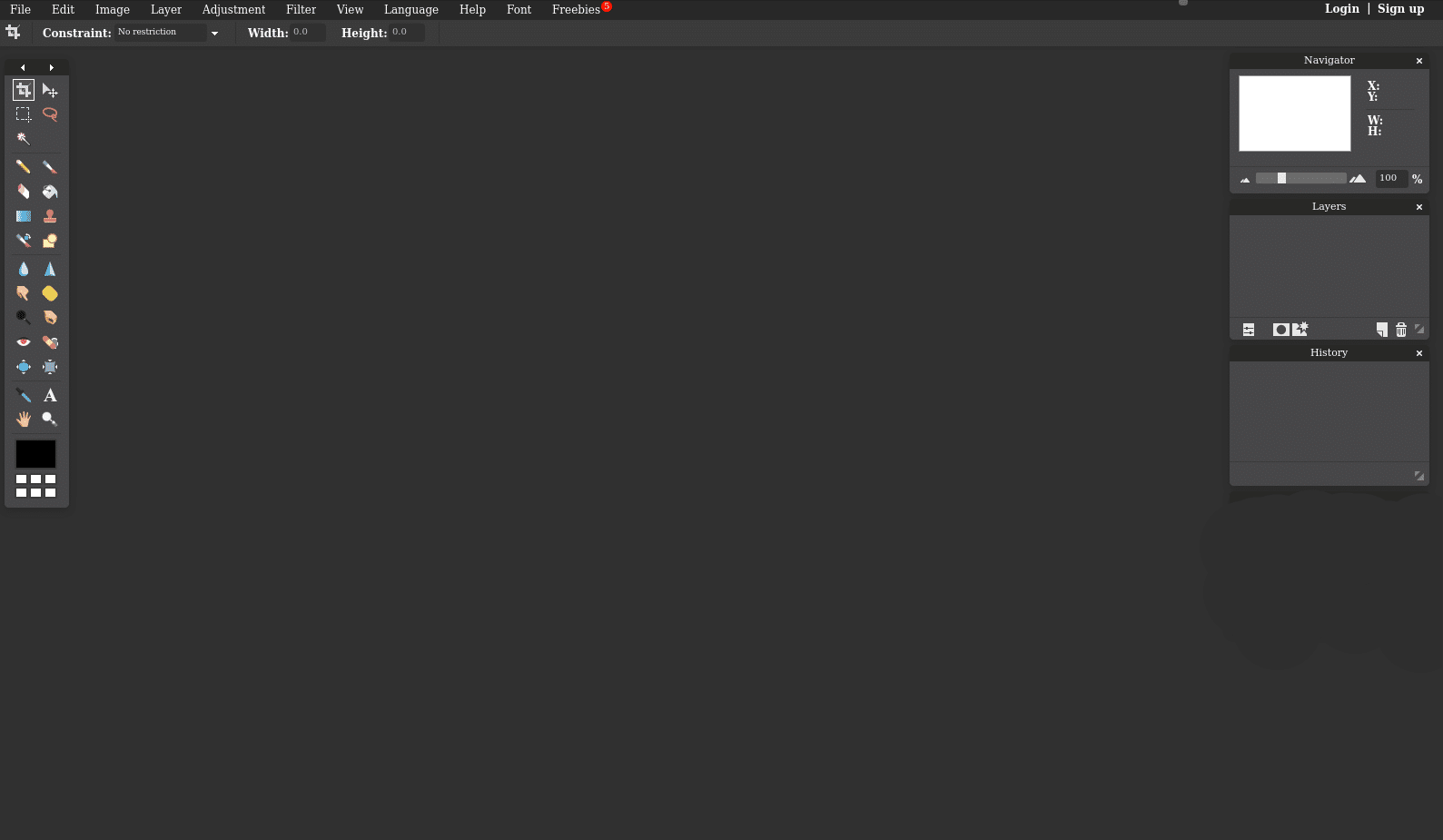
Pixlr editor allows free graphic designing online with a range of options almost equal to hardcore desktop packages like Adobe. It’s completely free and there are no hidden costs. But there are a few extras you can pay for…
Given the massive number of free filters, borders and overlays though – more than two million – you don’t really need to pay for anything else. This makes Pixlr a possible choice for freelancers and very small businesses who can’t – or don’t want to – pay out the huge enterprise fees required by other software on this list.
However, there are a certain number of ads which it is very tempting to pay the roughly $3.69 monthly fee to get rid of.
For Adobe Photoshop users, switching to Pixlr’s free offering will be straightforward. The interface looks and acts in much the same way. You also have access to most of the same tools. This includes everything you’d expect for easy image editing, including resizing, cropping and adjustment tools.
The free price is a definite point in its favour, as is the fact that the very secure mobile app version is lightweight. Pixlr is also – at time of writing – still in the development stage, meaning that some features may still be in beta. Yet updates do seem to be rolling along at a fair speed.
Taken as a whole, if you need something which allows free graphic designing online, the Pixlr editor is one worth trying.
Canva

Canva is the kind of free online design tool which would have been an impossible dream a few years ago:
Even if you have zero design knowledge and limited funds, you’ll still be able to create something which looks professional. This makes it another excellent choice for freelancers and small businesses on a limited budget.
That’s not to say Canva is light on features. It might not be the equal of one of the professional-level offerings of the Adobe Creative Cloud. Yet you can still design everything from logos to banners to infographics to photo collages using its simple drag and drop interface and wide range of base templates and layouts.
The basic version is entirely free and includes such a large number of fonts and design elements that you will never really need to pay for more, though there is a sizeable selection of additional elements available for purchase.
As with other free or freemium software, you might not get quite the same level of design freedom with Canva as you would with something like Adobe Photoshop – even if you pay for the upgraded version.
But as far as free online design tools go, you will struggle to beat Canva for price and ease of use.
Easel.ly
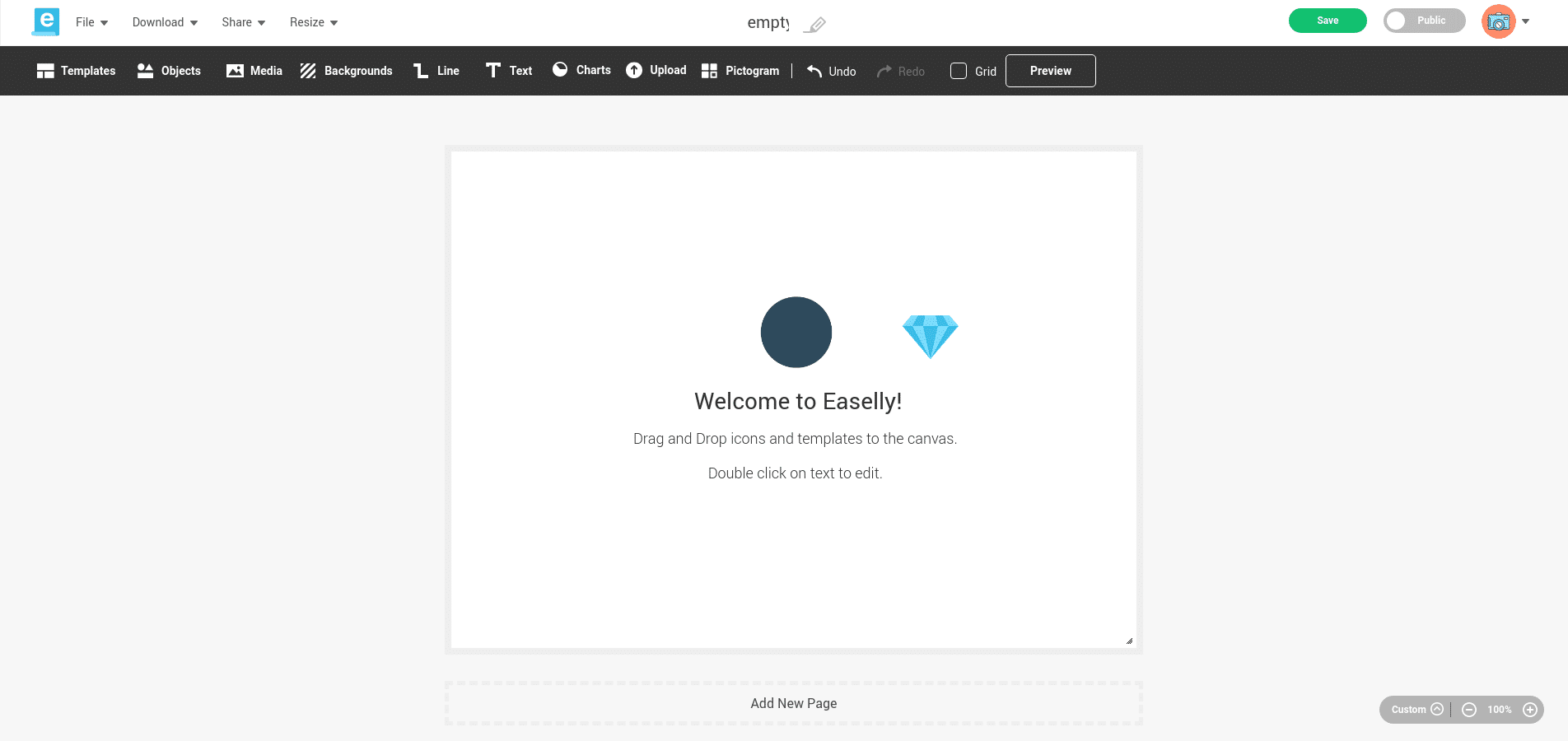
Another piece of free and easy graphic design software is the brilliantly-named Easel.ly.
So simple to use that the developer’s pun title should be applauded rather than groaned at, Easel.ly is ideal if you’re in the market for a free yet powerful infographic creation tool.
Whether you’re a student who has never tried to create an infographic in your life or a teacher trying to present information to your students in a very visual, easy-to-understand way, you will find Easel.ly’s strategy of offering a range of simple-to-modify templates an accessible one.
Easel.ly’s primary target audience is made up of learners and educators. This could include you when you are trying to educate your own target audience about the benefits of using your services or teach your own employees the importance of safety or materials handling.
As with most of the other free tools presented here, you may need to pay for the full version (usually costing around $3.69 per month – half price for teachers) to get access to the kinds of themes and features which match your brand or the subject you are trying to teach.
Yet the fact that Easel.ly is pretty much the epitome of easy graphic design software for infographics makes it well worth considering no matter how much design experience you have.
BeFunky
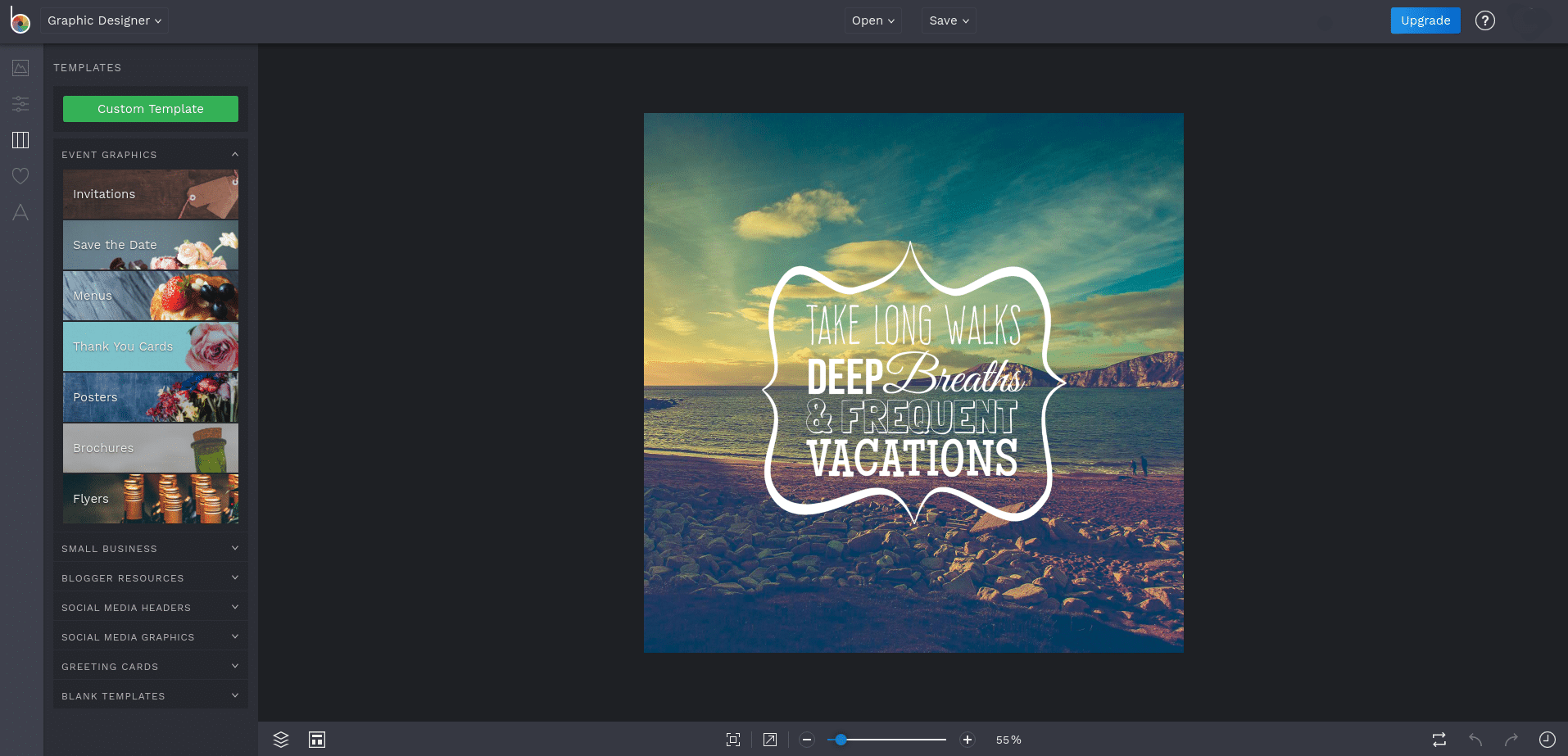
BeFunky is probably the lightest-weight online graphic design editor presented here. It’s designed for easy, on-the-go editing of photos – usually taken from your smartphone and destined for publishing on social media.
Don’t let that detract from the excellent range of photo editing tools that BeFunky offers you though:
Standard image editing features like cropping, vignetting and editing colour saturation and exposure are all present – as are tools for making excellent collages and adding a large range of interesting effects, filters and fonts to your photos.
All in all, these are better than the features which Instagram offers, making it a natural progression for many users of that platform. Though some users might be unhappy that there is no zoom function and you need a strong and stable internet connection for it to work.
BeFunky comes in a free version for Apple and Android which includes more than enough editing options for most tastes.
However, there is also a paid-for BeFunky Plus version. This usually costs around $3.69 or less – a fact you will be well aware of after using the app for any length of time, thanks to the deluge of advertising and prompts to upgrade.
As an online graphic design editor, it’s somewhat lacking. As a free, easy-to-use photo editing app for social media sites, BeFunky is well worth taking a look at.
—
The information was provided by the graphic design experts from Mail Boxes Etc. Australia.
No comments:
Post a Comment